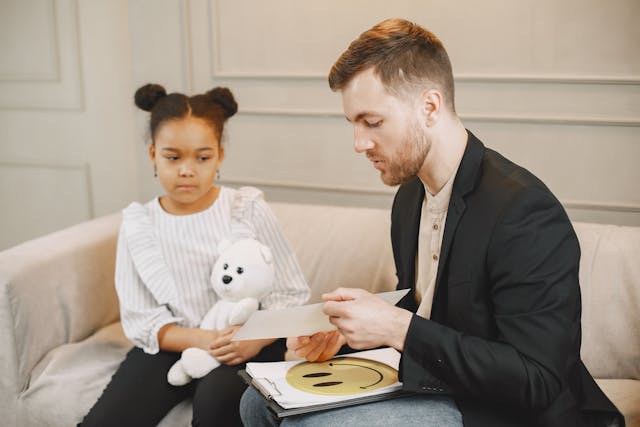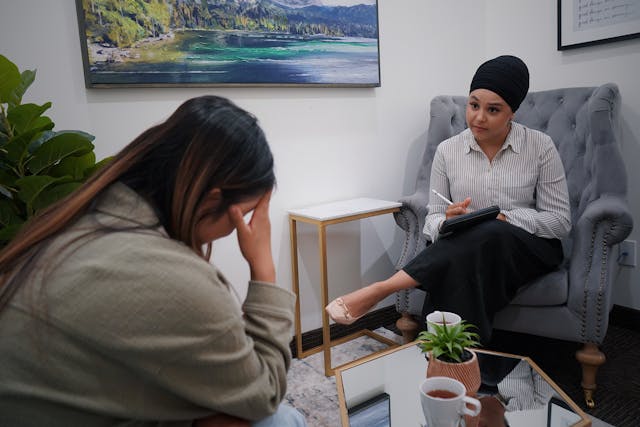Introduction
Are you a mental health practitioner who wants to step up your group therapy? If yes, then you're in luck! If you're looking for fun, effective ways to engage your clients in some activities to improve their mental health, you've come to the right place.
Who says mental health professionals can't put "fun" in "group therapy?" In this blog, we have researched and come up with some of the best group therapy activities for adults, as well as a range of game ideas for group therapy. Let's dive in!
Overview of cognitive-behavioral group therapy (CBGT)
First, let's talk about cognitive behavioral therapy or CBT. CBT aims to improve a person's mental health. It focuses on enhancing the way a person thinks and behaves through therapy. The purpose of CBT is to address mental health issues, such as abuse, depression, anxiety, and more.
However, the difference is that cognitive behavioral group therapy (CGBT) blends CBT in a group setting. The participants engage in this therapeutic approach as a group. CBT group therapy activities are an incredible way to develop social skills, learn from other participants, and improve thinking patterns and coping mechanisms.
It's essential to ensure that participants feel safe while conducting some CBT group activities. This way, they can share their experiences in a non-threatening environment and receive the support they need from others during group sessions.
There are different CBT group activities you can discover in this blog. Read on because these CBT group ideas will give you insights and tips for making group therapy effective.
CBT group therapy activity ideas with examples
The following CBT group therapy ideas will help you and the participants, especially those facing mental health challenges, to achieve therapeutic goals. First, we have:
1. Social roleplay
Roleplay is an excellent way for self-expression. It helps participants engage in different social situations and learn what to do when encountering them. This will lessen their anxiety and empower their social skills.
You can come up with different scenarios that you think will be helpful to the participants. For example, if some have low self-esteem, have them roleplay social scenes to empower them.
2. Mindfulness meditation
The world moves fast. Sometimes, we need to stay grounded and in touch with our emotions and thoughts. That's where mindfulness meditation comes into play.
It is a mental technique that will help your participants to concentrate, relax, and focus on the present. This can reduce negative thoughts, boost mental clarity, and strengthen self-control.
3. Gradual exposure
Gradual exposure means the participants will be gradually exposed to things that trigger or cause distress. This aims to reduce fear, anxiety, and avoidance of that specific situation or object.
For example, if a participant has a phobia of insects, you can start by having them imagine the image of insects. Then, in the next session, their imagination will be more vivid.
If successful and the participant feels safe enough, there can be real-life exposures, too. But make sure the participant is comfortable with it and willing to work on their phobia.
4. Successive approximation
Goals can be overwhelming. So, the successive approximation is here to tackle these overwhelming goals by breaking them into smaller steps. Through this, participants can achieve a bigger goal and mastery by taking small steps every day.
5. Skills training
Skills training is designed to help individuals learn and use new skills for their growth. These could include communication skills, social skills, assertiveness, or other general psychological skills.
For example, you can train the participants to be kind to themselves and improve self-talk. They can also practice breathing exercises, mindfulness, and other activities to improve their mental health and other skills.
6. Relaxation breathing training
When things get hard, we forget to pause and breathe. Sometimes, that can cause anxiety and panic attacks. So, through relaxation breathing training, participants can reduce symptoms such as rapid heart rate, shortness of breath, trembling, etc.
7. Problem-solving
This CBT exercise is designed to help participants or clients be proactive in solving their problems during challenging times. Problem-solving exercises allow participants to take control of their emotions and navigate difficult situations. To put this into practice, you can come up with CBT games for groups tailored to highlight their problem-solving skills.
8. Worry journaling
Journaling can help us slow down, gather our thoughts, and calm our minds. If your participants are stressed or suffering from anxiety, you can advise them to do worry journaling.
You can give them prompts to answer so they know what to write. For example:
- What are you grateful for today?
- What are you looking forward to?
- What's the highlight of your day?
- What are some of the worries you need to let go of?
They can do this every morning, night, or whenever they have racing thoughts or worry.
9. Discussing trauma
Discussing trauma can help participants process their thoughts and emotions about the traumatic events.
To start with this exercise, you can brainstorm discussion questions for group therapy to get the conversation started. If you have participants who are dealing with substance-use problems, there are a great number of group topic ideas for substance abuse so participants can talk about their experience.
Make sure that participants feel safe discussing their traumatic experiences and are comfortable talking about them.
10. Focusing on self-care
Self-care doesn't mean you have to do it alone. There are group activities for self-care that encourage participants to implement together but will benefit them individually.
Some group CBT activities that stimulate self-care are:
- Playing board games
- Exercising together
- Practicing mindfulness
- Starting new hobbies together
- Having lifting and mindful conversations
11. People search
Connection and openness can make the group more cohesive and supportive. This group therapy activity is an icebreaker that encourages participants to interact and discover commonalities with each other. It involves participants asking questions or finding specific traits among group members, which helps build rapport and create a sense of community.
Benefits of group CBT therapy
Now that we've laid down these CBT group activities, let's look further into its many benefits for you and your clients, some of which are:
Cost-effective
Cognitive behavioral therapy activities for groups are cost-effective because you can work with many participants in one session. This makes them more cost-friendly. People who want to improve their well-being can join CBGT rather than one-on-one therapy, which can be more expensive.
Improve skills
CBGT can also include participants' skills through interactive CBT activities for group therapy. These can include their coping strategies, problem-solving skills, thinking patterns, communication skills, cognitive restructuring, and therapeutic techniques.
Learn different perspectives
This happens to any other group activity. Through CBGT, the participants will discover more about each other and learn about the different perspectives and experiences of others.
Build healthy habits
When the group therapy ends, each participant can bring the lessons they learned from the group CBT exercises. It's not a one-and-done kind of thing but continuous work. So, through CBGT, they can build healthy habits even outside the therapy sessions.
Receive support
One of the best things about group therapy is not feeling isolated and alone. Participants going through the same thing can get together, relate with each other, and provide support to boost their wellness.
Conclusion
All in all, CBT activities for groups can improve themselves as individuals while thriving in a supportive environment. The more counseling group therapy ideas you have, the more enriching your therapy can be. It doesn't need to have a nerve-racking atmosphere.
Using the abovementioned activities and CBT techniques, you can create a fun-loving environment in which participants will enjoy and feel safe. And that plays a big role in achieving the best outcomes for your clients. Looking for ways to work in your business rather than working on it? Try Carepatron and streamline your healthcare practice with ease.




.jpg)










.jpg)

.jpg)

.jpg)

.jpg)




.jpg)
.jpg)